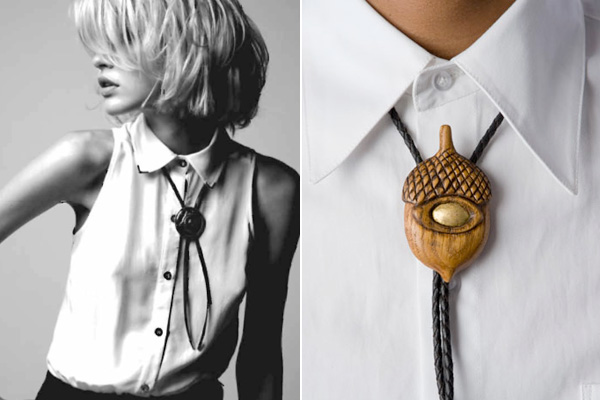Introduction to Bolo Ties and Their History
Bolo tie, those unique western accessories that have woven themselves into the fabric of American culture, are more than just fashion statements. With their origins tracing back to the Southwestern United States, these distinctive neckties made from braided leather and adorned with decorative slides carry a rich history. But as they gain popularity beyond their traditional roots, a conversation arises about cultural appropriation. Are bolo ties merely trendy fashion pieces or do they represent something deeper? Let’s explore their journey through time and dive into the complexities surrounding this iconic accessory.
The Controversy of Cultural Appropriation
Cultural appropriation is a heated topic in today’s society. It raises questions about ownership and respect for cultural symbols.
Wearing items from other cultures can sometimes cross the line into appropriation. This happens when elements are taken without understanding their significance or context. The bolo tie, with its roots in Southwestern Native American culture, often enters this conversation.
Some argue that using a bolo tie as mere fashion overlooks its historical importance. Others see it as an appreciation of style—an homage rather than theft.
Yet, intent doesn’t always shield someone from criticism. Many feel that borrowing aspects of marginalized cultures perpetuates stereotypes and disrespects traditions rooted in deep meaning.
Navigating these complex waters requires sensitivity and awareness of the histories behind such cultural artifacts. Respecting those origins is crucial to fostering genuine dialogue about identity and expression.
Arguments for and Against Bolo Ties as Cultural Appropriation
Supporters of bolo ties argue that they symbolize the blending of cultures. They see them as a celebration of Western heritage, particularly in Southwestern states. Many wearers appreciate the craftsmanship involved, often celebrating local artisans who create unique designs.
On the flip side, critics highlight that bolo ties have deep roots in Native American culture and other Indigenous communities. They argue that wearing these accessories without understanding their significance can lead to misrepresentation and cultural dilution.
Some believe it trivializes a rich history tied to identity and tradition. Thus, they urge for sensitivity toward cultural symbols.
The debate continues as people navigate personal expression versus respect for tradition. It’s essential to consider perspectives from different backgrounds when discussing this topic.
Perspectives from Native American Communities
Perspectives on bolo ties within Native American communities vary widely. Some view them as a form of artistic expression, highlighting the craftsmanship and design that often incorporates traditional symbols and materials.
For others, there’s concern about appropriation. When non-Native individuals wear these cultural items without understanding their significance, it can feel disrespectful. This sentiment stems from a long history of misrepresentation and commodification of Indigenous culture.
Many artists emphasize the importance of context. They encourage people to understand the stories behind specific designs before wearing them. Educating oneself fosters respect for heritage rather than trivializing it.
Conversations around bolo ties reflect broader discussions on identity and representation in fashion. Engaging with these perspectives helps bridge gaps between cultures while honoring traditions authentically.
The Importance of Educating Yourself on Cultural Appropriation
Understanding cultural appropriation is essential in today’s diverse society. It’s about acknowledging the histories and meanings behind various traditions and symbols.
When you educate yourself, you gain insight into how different cultures express their identities. This awareness fosters respect for those whose heritage might be misrepresented or trivialized.
Recognizing the impact of your choices can lead to more thoughtful interactions with others. It’s not just a matter of fashion; it involves real people and stories connected to those items.
Additionally, education enables conversations that bridge gaps between cultures. By learning from each other, we create an environment where appreciation thrives rather than appropriation.
Taking the time to explore these issues shows a willingness to grow personally and socially. Embracing this journey enriches our understanding of humanity’s shared tapestry while honoring its many threads.
Alternatives to Wearing Bolo Ties
If you’re looking for alternatives to bolo ties, there are plenty of stylish options that respect cultural significance. Consider classic neckties or bow ties. They offer a polished look without any cultural implications.
Scarves can also be an excellent choice. A silk scarf tied elegantly around the neck adds a touch of flair while being versatile in style and fabric choices.
Jewelry pieces like statement necklaces or chunky pendants can serve as eye-catching accessories that express individuality without appropriating culture.
For those who prefer something more casual, consider wearing unique collar pins or brooches. These small details can enhance your outfit in a distinct way.
Embrace hats, such as fedoras or cowboy hats, which carry their own rich histories and styles. They allow for personal expression while respecting the traditions they come from.
Conclusion: Respectful Ways to Honor the History and Culture of Bolo Ties
Respecting the history and culture behind bolo ties is essential for anyone who wishes to wear them. Understanding their origins can foster admiration rather than appropriation. When considering a bolo tie, think about where you source it from. Opt for artisans or brands that honor Native American craftsmanship and ensure fair compensation.
Additionally, educating yourself on the significance of bolo ties within Native communities allows for deeper appreciation. Engage with local cultures respectfully, attending events or exhibitions that celebrate this unique art form.
If you’re unsure about wearing a bolo tie, consider supporting Native artists by showcasing different forms of their craftsmanship instead—like jewelry or textiles—that may not carry the same cultural weight.
Honoring the rich tapestry woven into each piece goes beyond mere fashion; it’s about celebrating shared heritage while being mindful of boundaries. Embrace opportunities to learn and grow in your understanding of cultural symbols like the bolo tie so that you can appreciate them genuinely and respectfully.


